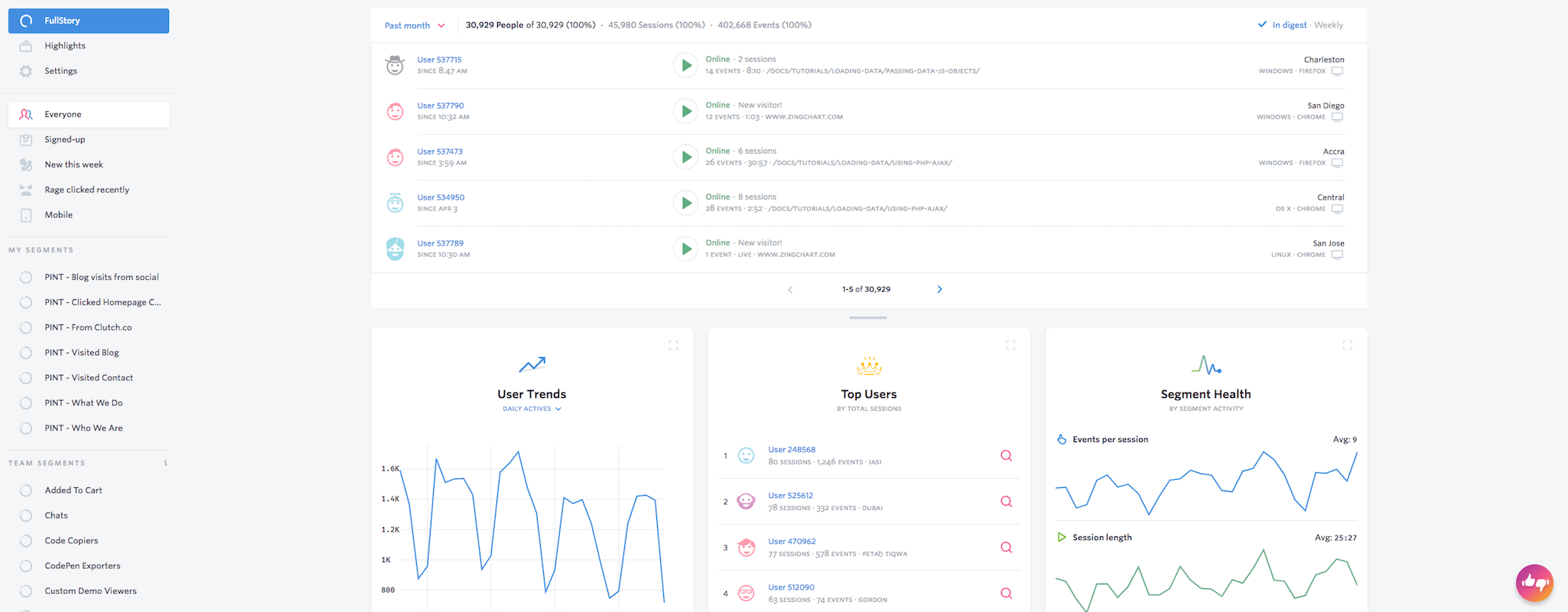
How We Use Real User Monitoring Tools To Increase Conversions
Table Of Contents
Results We’ve Seen With These Tools
Everybody loves to see results. In order for this blog post to have maximum impact, we would like to share some of the experience we have had with Real User Monitoring Tools before we begin.
We have heavily used both FullStory and Hotjar on one of our in-house projects as our primary User Monitoring Tools. These are the results we have seen:
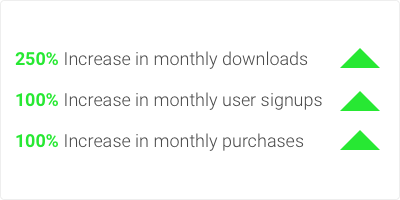
This guide will serve as a catalyst for you to hopefully replicate (or beat) our results.
Introduction
FullStory and Hotjar are new wave Real User Monitoring (known as RUM) tools that have been changing the landscape of digital marketing. RUM tools look to record every single action that every single user takes on a website.
However, FullStory and Hotjar go beyond presenting data in a single dimension. Each tool allows you to visually digest user interaction on your website in real-time. This adds the previously missing aspect of seeing how an unrelated third party truly navigates your website.
Previously, Real User Monitoring tools answered the question of what happened on your website, not how it happened. With these tools now we can measure and view important interactions like errors, user-dropoffs, and goal completion paths.
Though with great power, comes great responsibility. These tools are extremely dense, especially if you have a large user base. There is a lot of data to sift through and endless hours of user sessions to watch.
So why would we recommend these tools to a client after a redesign? Why would we live by these tools in our Marketing department?
Well, through tons of trial-and-error within the past few years, we have worked out a system that simplifies these tools to optimize their use. We make data from FullStory and Hotjar easily digestible and actionable through the use of user segments.
Tools Overview
Let’s take a step back and go over FullStory and Hotjar. Each tool has a purpose and unique characteristics that aid in optimizing our websites.
FullStory

“Fullstory’s pixel-perfect session playback isn’t video: it’s a full-inspectable re-creation of your site, including the DOM, JS console, and assets.”
Hotjar
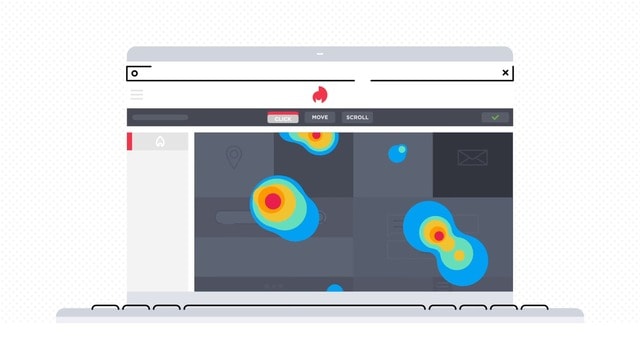
“Visualize behavior – Understand what users want, care about and do on your site by visually representing their clicks, taps and scrolling behavior – which are the strongest indicators of visitor motivation and desire.”
How-To Guide
Let’s take a look at a real-world example of how we would use both FullStory and Hotjar in harmony to solve a normal marketing issue. Then we will move into a more detailed approach on how to use both of these tools correctly.
Real-Life Example

Take this example, you own an online clothing store that sells t-shirts and tank tops. Fourth of July is coming up and you have been campaigning on social media over the last few months to introduce your new line of American flag t-shirts and tank tops.
However, you are a month away from the Fourth of July and you have made minimal sales, even though traffic to your American flag product pages has steadily been increasing.
We can use both FullStory and Hotjar to determine the root of this issue.
First, let’s use FullStory to segment against any user reaching your American flag t-shirt and tank-top pages. Next, let’s add a second dimension to this funnel. You want to target any user that reaches the American flag t-shirt and tank top pages via your Instagram campaigns.
Once segmented, we can use Hotjar to help us fill in some blanks. We can set up some heat maps on these product pages to collect click and scroll data. We can also set up conversion funnels to see where exactly Instagram traffic fell off en route to purchase. We can also utilize Hotjar’s polls and survey features to ask our audience why they aren’t purchasing.
Analysis
First, we reference the data we have collected from Hotjar so we know what to look out for while viewing FullStory sessions. The heatmap data we have collected tells us that a significant amount of users did click to add our shirts to their shopping carts.
Next, we check out the Hotjar funnels we have set up. These funnels tell us that there is a drop off right before purchase when the user is prompted to choose between shipping options.
This is a perfect time to start referencing FullStory. After watching most of the sessions in our campaign funnel, it is apparent that almost all users are unhappy with the shipping and handling cost of $5.99 as evidenced by users not choosing a shipping option and exiting the page quickly at this stage.
Resolution
We have located the problem in our purchase funnel. Now we can use Hotjar user surveys to help with our investigative work. The internet is pretty quick to share an opinion so they can help us solve the question of why users abandon their carts at such a late stage.
We post a feedback poll asking users about how we can improve their purchase process. Within the day we receive more than a few requests for free shipping, as competitors have offered free shipping along with their Fourth Of July campaigns.
After a quick A/B test offering free shipping, we have now started to convert purchases of American flag tank-tops and t-shirts. Good work!
FullStory Starter Pack Framework
FullStory can be an extremely valuable piece of your marketing stack. However, there is a little groundwork that goes into preparing FullStory for success. For that reason, we have prepared a “starter pack” for which segments and funnels you should be creating.
This should help you get started with becoming a FullStory expert. We will break this down into three sections: segments, actions, and funnels.
Segments
Purchase Segments:
- General Purchases
- Highest Purchasing Countries
- Highest Purchasing Cities
- Highest Purchasing Referral Sources
Marketing Campaign Segments:
- Social Media Campaigns
- Email Marketing Campaigns
- Email Automation Campaigns
- Paid Advertising Campaigns
- Blog Traffic
- Organic Search Traffic
Actions
- Asset Download
- Product Download
- “Add To Cart”
- Search
- Form Submission
- Form Abandonment
- Chats
- Errors
- Purchase
Funnels
- Marketing Campaign Funnels (entrance to desired conversion)
- Marketing Automation Funnels (entrance to desired conversion)
- Popular Referral Funnels (entrance to desired conversion)
- Purchase Funnels
- Contact Funnels
- User Drop-Off Funnels
- Micro-Conversion Funnels (download, sign-up, contact, return visitors, etc…)
My Favorite Way To Use FullStory
I create segments against purchasers to find the most valuable inbound traffic sources.
Examples From Our Own Account
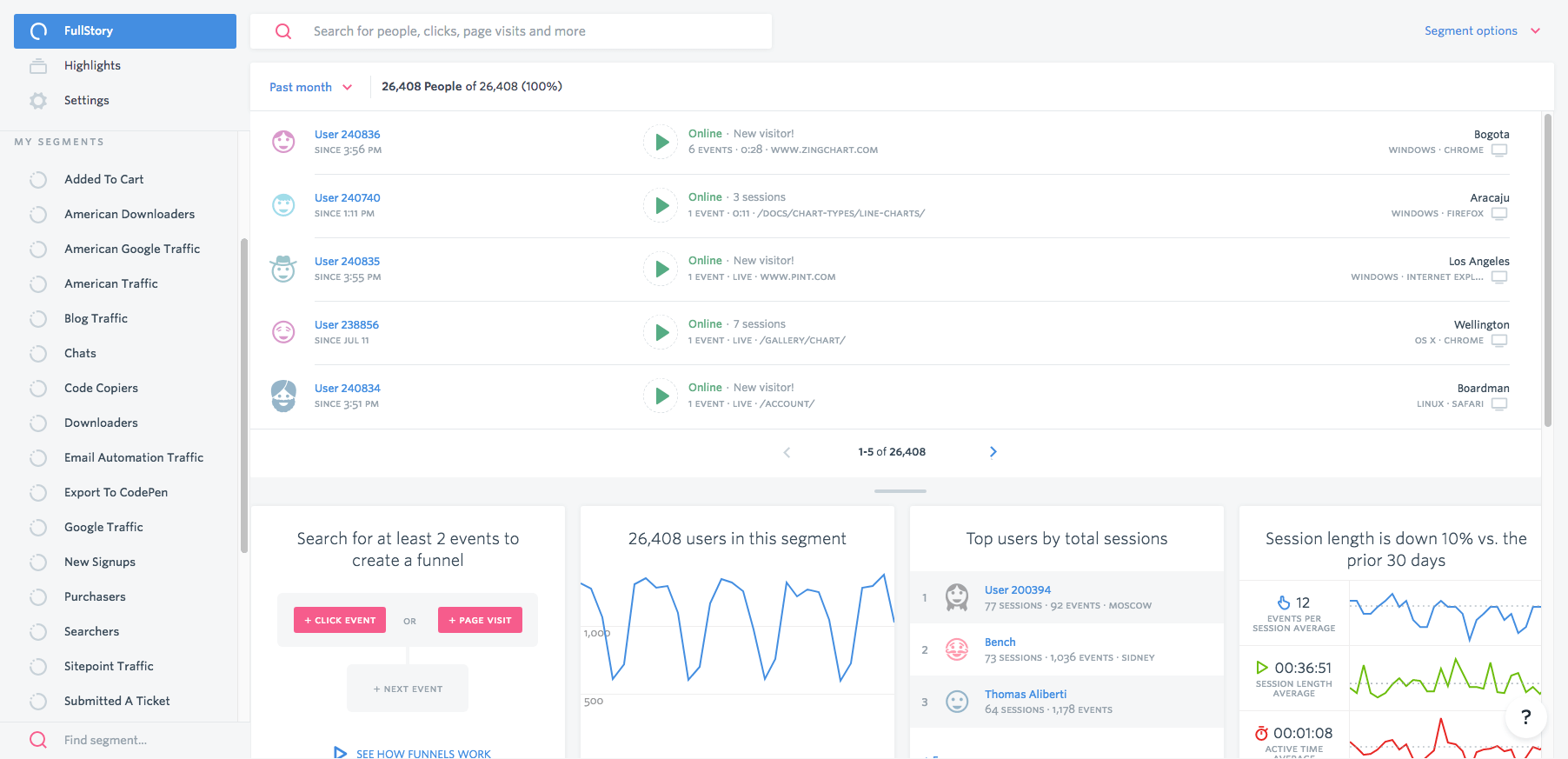
Hotjar Starter Pack Framework
Hotjar is extremely useful for the visualization of aggregate data. We have also prepared a starter pack template for Hotjar which can also be broken down into three parts: heatmaps, funnels, and feedback.
Heatmaps
Click-Based Heatmaps:
- CTA’s
- Links
- Popular Elements
- Important Content Interaction
- Unpopular Elements
- Dead Clicks
- Hover But No Click
Testing-Based Heatmaps:
- Funnel Disruptors
- Page Scroll Length
- Device Based Click Trends
- “Above The Fold”
- High Traffic, High Bounce Pages
Basic Funnels
- Forms
- Entrance To Conversion Funnel (very effective for finding out where big funnel drop-offs occur)
- Campaign To Conversion Funnels
- Automation To Conversion Funnels
- Entrance To Purchase Funnel
- Cart Abandonment Funnel
Feedback
Features Based:
- Missing Features (did you find what you were looking for?)
- Wanted Features (do we offer what you are looking for?)
- Features Feedback (which features can we improve?)
Action Based:
- Sign-Up Feedback (why did you sign up with us? was it easy to sign up?)
- Pricing Feedback (is our pricing appropriate?)
General Feedback:
- Referral Feedback (how did you hear about us?)
- Landing Page Feedback (what product or service are you looking for?)
- Short Answer Email Survey (who are you? which features do you use? which features do you wish we had?)
My Favorite Way To Use Hotjar
I use heatmaps to answer funnel drop-off questions.
Examples From Our Own Account
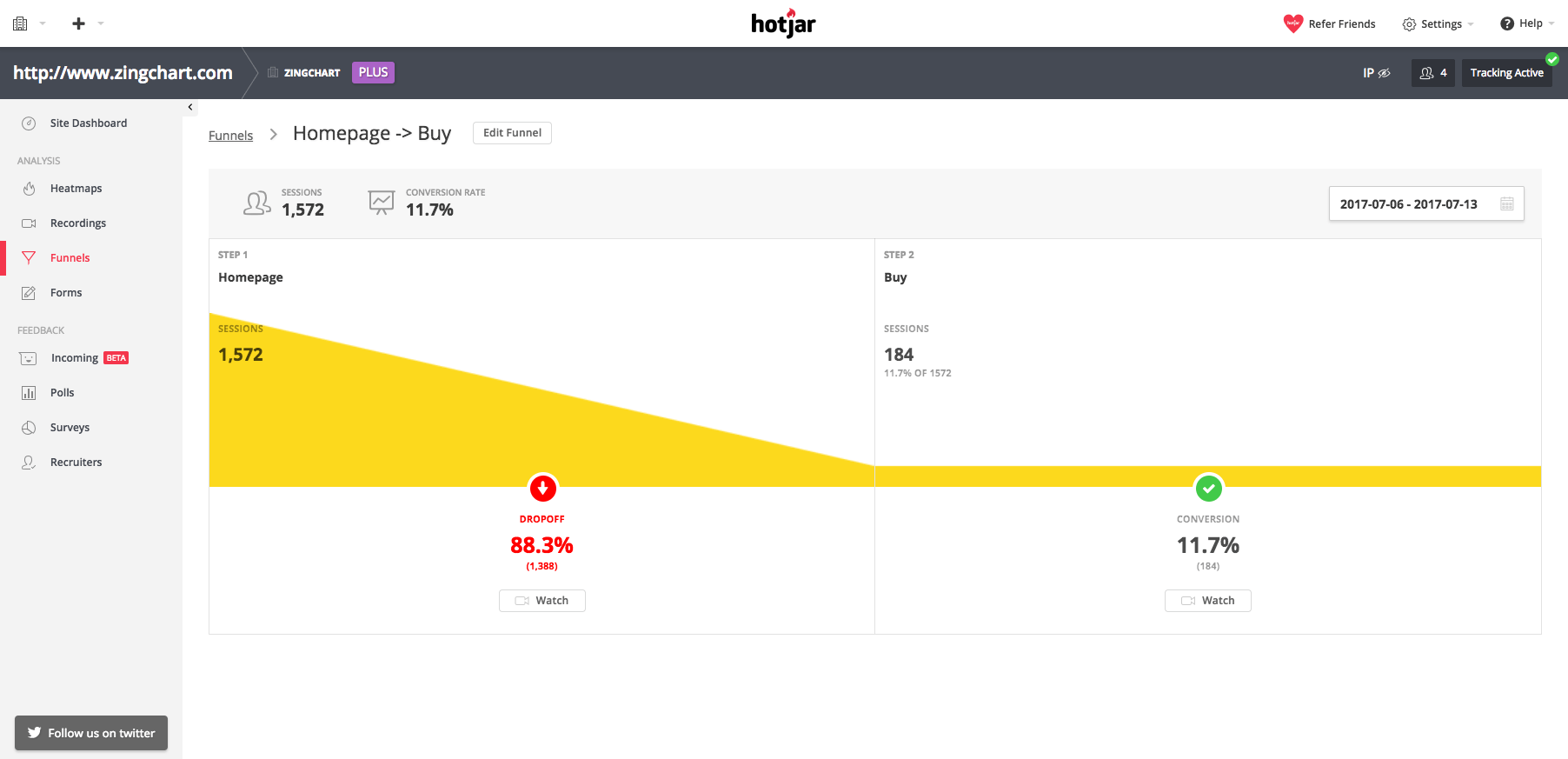
Conclusion
FullStory and Hotjar are very powerful tools that have the ability to completely change conversion patterns on any website if used correctly. This post should serve as a way to start using these tools the right way. Take some of these “starter-pack examples” and run with them.
Having a template will help you eliminate some of the headaches we faced trying to make sense of data and help you become more creative with conversion strategies. Cheers!